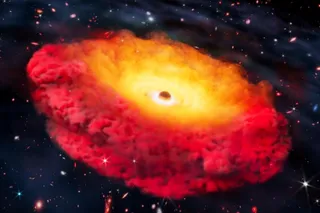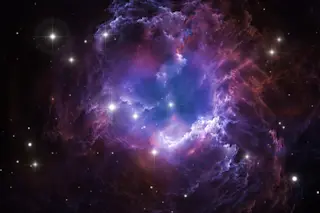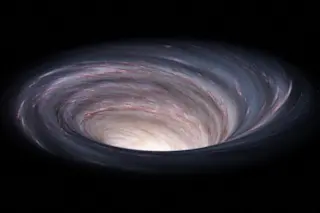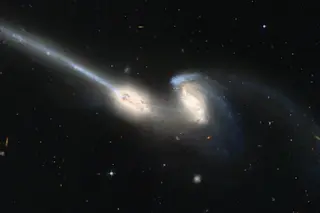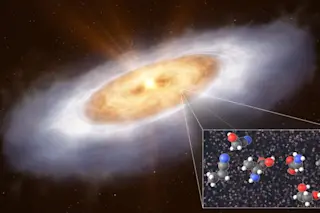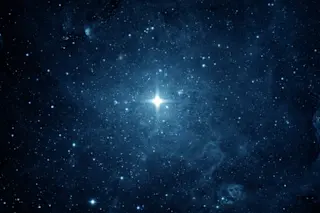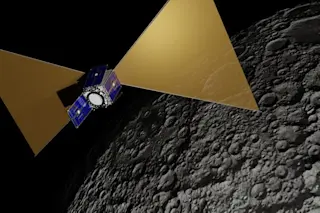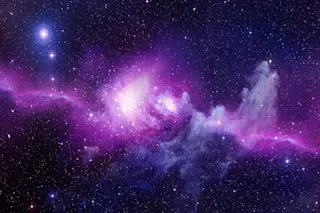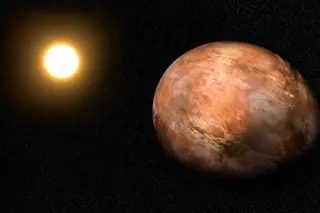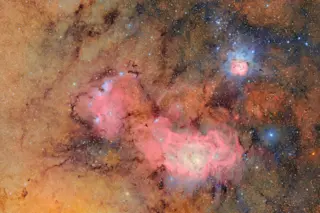One of these things is not like the other: Astronomers have spotted a dwarf galaxy that spans just 3,000 light years across (as opposed to our Milky Way's diameter of 100,000 light years), but hosts an outsize supermassive black hole for its puny size. From DISCOVER blogger Phil Plait:
Some smaller galaxies have supermassive black holes as well, but in general these dwarf galaxies have some structure to them, with a well-defined core. Henize 2-10, as you can see, it a mess! It doesn’t have much overall structure, which is why it’s classified as an irregular galaxy. The thinking for big galaxies is that the black hole forms at the same time as the galaxy itself, and to regulate the growth of each other. When you look at lots of big galaxies, there’s a pretty clear overall correlation between the mass of the black hole and the galaxy around it.
...


